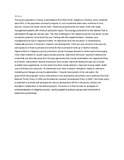| dc.description.abstract | The poultry population in Kenya is estimated at 29.6 million birds. Indigenous chickens, which constitute about 80% of this population are kept by majority of rural households where they contribute to food security, income and social-cultural roles. These dual-purpose birds are raised under free-range management systems with minimum production inputs. The average productivity for the national flock is estimated at 60 eggs per hen per year. The main challenges of the indigenous poultry sub-sector include low genetic potential, low productivity, poor feeding with little supplementation, diseases, poor management and lack of organized market. At institutional level the sub-sector is constrained by inadequate provision of extension, research and development. There are new concerns of bio-security and exposure of birds to polluted environments that could lead to build up of harmful residues. Opportunities for indigenous poultry production include increased demand for white meat and emerging niche urban markets for quality organic poultry products. Significant efforts are required to address the constraints and stimulate production through approaches that include sensitisation and capacity building at all levels. Interventions required at producer level include: improved feeding through use of locally available feed supplements, on-farm feed formulation, breed selection, improved housing, better health care and biosecurity measures. At institutional level, there is need to strengthen research, extension, marketing and linkages among the stakeholders. Towards improvement of the sub-sector, the government has proposed various interventions in the recent policy documents and in particular the Draft National Poultry Policy of 2009 and the National Livestock Development Policy of 2008. The former policy is expected to promote and synergise the various development efforts in the poultry industry and strengthen collaboration of the different players. The policy is further focused on strategies for commercialisation of indigenous poultry, mainly targeted at producer groups and involvement of stakeholder partnerships. | en_US |

